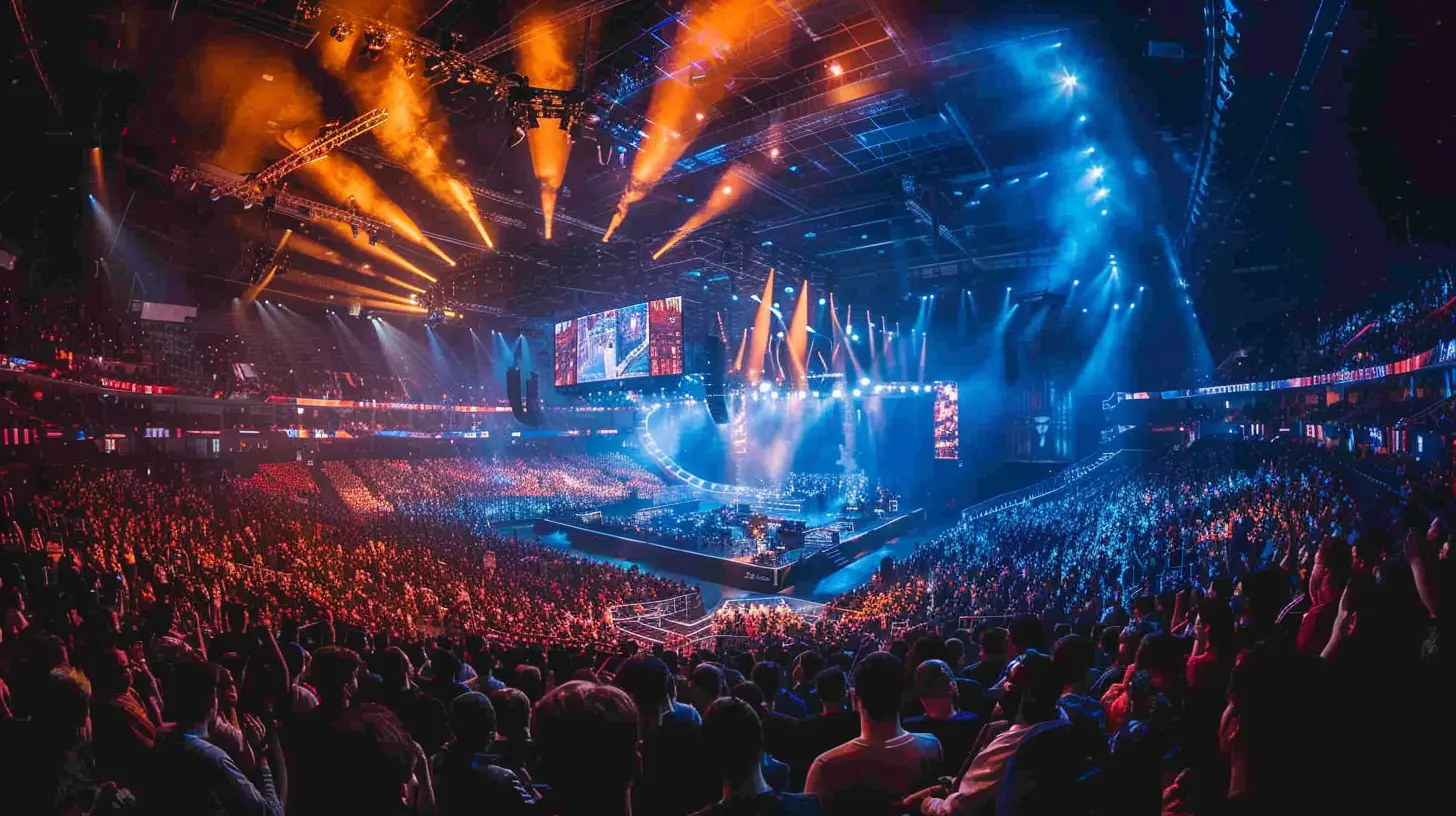The Impact of Japanese Arcades on Global Gaming
4 May 2025
When someone mentions "arcades," what’s the first thing that comes to mind? Flashing lights, upbeat music, and rows upon rows of game cabinets, right? Now, where do you think a lot of that magic comes from? If you guessed Japan, you’re spot on. Japanese arcades have been the beating heart of the global gaming industry for decades. From innovative game design to creating an entirely unique gaming culture, Japan has made its mark in ways that ripple across the world.
Let’s dive into how Japanese arcades have impacted global gaming, shall we? Trust me, there’s a lot more to these neon-lit havens than just Pac-Man and claw machines.
A Blast from the Past: The Rise of Japanese Arcades
To really understand their impact, we have to rewind the clock a bit. Japanese arcades, or _game centers_ as they’re often called, first exploded in popularity during the 1970s and 80s. This was around the same time when video games themselves were becoming a thing. Companies like Namco, SEGA, and Taito started pumping out arcade cabinets that were revolutionary for their time.Games like Space Invaders, Donkey Kong, and of course, Pac-Man (which was literally designed in Japan) didn’t just make waves—they were tidal forces. These cabinets weren’t just about playing a game; they were about creating an experience. And boy, did they succeed.
Japanese developers understood the importance of immersion, so their games often featured catchy soundtracks, addictive gameplay loops, and that "just one more try" feeling. Sound familiar? That’s because those same elements still dominate game design today. 
The Cultural Phenomenon of Japanese Arcades
If you walk into an arcade in Japan, it feels like stepping into another world. It’s not just a room filled with games; it’s a culture, a vibe, a sanctuary for gamers. But it’s not all fun and games (well, it mostly is). Japanese arcades have their own set of unwritten rules, traditions, and quirks that make them unique.Social Hubs for Gamers
In Japan, arcades are as much about community as they are about gaming. These spaces became meeting grounds for people of all walks of life. Whether you’re a high school student unleashing stress after exams, a salaryman trying to unwind after work, or a competitive gamer seeking worthy challengers, there’s a place for you here.Ever heard of the phrase "gaming brings people together"? Well, Japanese arcades practically wrote the book on that. Even globally, this idea of gaming as a shared experience has roots in the social structure of Japanese arcades. Think about online multiplayer games or esports tournaments. They all owe a debt to this sense of collective engagement.
Game Genres Born in the Arcade
Many gaming genres that we still love today were either born or perfected in Japanese arcades. Fighting games like Street Fighter II and Tekken? Those are arcade babies. Rhythm games like Dance Dance Revolution? Another Japanese innovation. Shmups (shoot ‘em ups), beat ‘em ups, and even racing games owe a lot to Japan’s arcade scene.These genres didn’t just stay within the confines of Japanese arcades. They spread like wildfire, influencing game developers worldwide and shaping how players interacted with games.
Crossing Borders: Japanese Arcades Go Global
Alright, so you’ve got the ultra-cool Japanese arcades. But how did they shape gaming on a global scale?Exporting Innovation
Arcades in other countries drew heavily from the Japanese model. Developers outside of Japan saw the potential in what Japanese gaming companies were doing and wanted in on the action. For instance, games like Mortal Kombat and Killer Instinct—both Western creations—were directly competing with Japanese hits like Street Fighter and Tekken.Even the design of arcade hardware was often influenced by Japanese manufacturers. Companies like Namco and Konami supplied arcade cabinets to venues across the world. If you played an arcade game in the 90s, chances are good it had some Japanese DNA in it.
The Competitive Scene
Japanese arcades also helped lay the groundwork for the competitive gaming scene. Fighting game tournaments, for example, are still a HUGE deal in Japan. These events helped establish the idea of gaming as a true competitive sport, something the world eventually adopted in the form of esports.Think about EVO, one of the largest fighting game tournaments in the world. Its roots can be traced back to what was happening in Japanese arcades decades ago. 
The Evolution of Arcades: From Past to Present
It’s no secret that arcades aren’t quite as popular as they used to be. The rise of home consoles and online gaming made it easier (and cheaper) for people to enjoy games from the comfort of their couch.But here’s the thing: while arcades in many parts of the world have faded into nostalgia, Japanese arcades have evolved to stay relevant.
Modern Japanese Arcades
Walk into a Japanese arcade today, and you’ll see a mix of old-school classics and cutting-edge tech. VR cabinets, interactive rhythm games, and even Gundam simulator pods are keeping the arcade scene alive. These aren’t just games—they’re experiences you can’t replicate at home.What’s more, Japanese arcades have leaned heavily into mobile and online integration. Players can use IC cards to save their progress or even sync their arcade achievements with mobile games. They’ve essentially bridged the gap between the old-school arcade culture and the modern gaming world.
The Influence on Game Design Today
It’s not all about the physical spaces, though. Japanese arcades have influenced how games are designed worldwide. The emphasis on replayability, leaderboards, and skill-based challenges started in arcades. Developers knew that if a game wasn’t fun or challenging, players wouldn’t keep pumping quarters into the machine.Think about mobile games today. Many of them borrow arcade principles—short, engaging gameplay loops, high scores, multiplayer options. Those gems you collect in your favorite match-3 game? They’re just a modern twist on the coins you’d try to rack up in an arcade shooter.
Nostalgia and the Future
Here’s a question for you: when was the last time you played an arcade game? Odds are, even if you haven’t been to a physical arcade in years, you’ve played an arcade-inspired game recently.The nostalgia factor is strong, and game developers know it. Many modern games, like collections of retro titles or reboots of old arcade classics, bank on that warm, fuzzy feeling we get when we play something that reminds us of a simpler time.
And while the traditional arcade scene may be disappearing in many places, Japan continues to keep the spirit alive. Could Japanese arcades inspire a broader global resurgence? Maybe. Gaming is, after all, cyclical. What’s old often becomes new again.
Wrapping It Up
If you think about it, Japanese arcades have done more than just influence gaming—they’ve shaped how we play, connect, and compete. They’ve given rise to genres, inspired developers worldwide, and even laid the groundwork for the global esports scene. Whether you’re jamming out to a rhythm game, throwing Hadoukens in a fighting game, or chasing high scores in a mobile app, you’re feeling the impact of Japanese arcades.So the next time you fire up your favorite game, maybe take a moment to appreciate the legacy of those neon-lit havens from across the Pacific. Because without Japanese arcades, who knows what gaming would look like today?
all images in this post were generated using AI tools
Category:
Arcade GamesAuthor:

Francesca West
Discussion
rate this article
5 comments
Theodore Parker
Japanese arcades: where gaming legends are born and dominated!
May 21, 2025 at 4:19 AM

Francesca West
Absolutely! Japanese arcades have been pivotal in shaping gaming culture, fostering innovation, and nurturing iconic gaming communities. They’ve truly set the stage for legends to thrive.
Gunnar Reed
Japanese arcades are like the candy stores of gaming—bursting with color, nostalgia, and that sweet sound of victory! 🎮🍭 Who knew you could level up your skills and your snack game all in one fun-filled trip? Game on!
May 19, 2025 at 4:17 PM

Francesca West
Absolutely! Japanese arcades truly blend vibrant gaming experiences with nostalgic charm, making them unique cultural hubs that have significantly influenced global gaming trends. Game on! 🎮
Veda Lawson
Japanese arcades are the vibrant heart of gaming culture, blending nostalgia with innovation. Their unique ecosystems not only shaped local gamers but also laid the groundwork for global gaming trends and experiences.
May 14, 2025 at 2:38 PM

Francesca West
Thank you for highlighting the dynamic role of Japanese arcades in shaping both local and global gaming culture. Their blend of nostalgia and innovation indeed continues to influence the gaming landscape worldwide.
Soraya McIlroy
Great read! Japanese arcades truly shaped the gaming landscape, blending social interaction and innovation. It’s fascinating how they introduced so many beloved franchises and experiences that resonate globally. Can’t help but reminisce about those days spent in arcades with friends!
May 13, 2025 at 3:07 PM

Francesca West
Thank you! I'm glad you enjoyed the article. Japanese arcades indeed played a pivotal role in shaping gaming culture and fostering community.
Nathaniel Hunter
Japanese arcades have profoundly influenced global gaming culture, shaping game design, community engagement, and the evolution of interactive experiences worldwide.
May 10, 2025 at 2:43 AM

Francesca West
Thank you! Japanese arcades truly revolutionized gaming by introducing innovative designs, fostering community interaction, and setting trends that resonate across the globe today.



